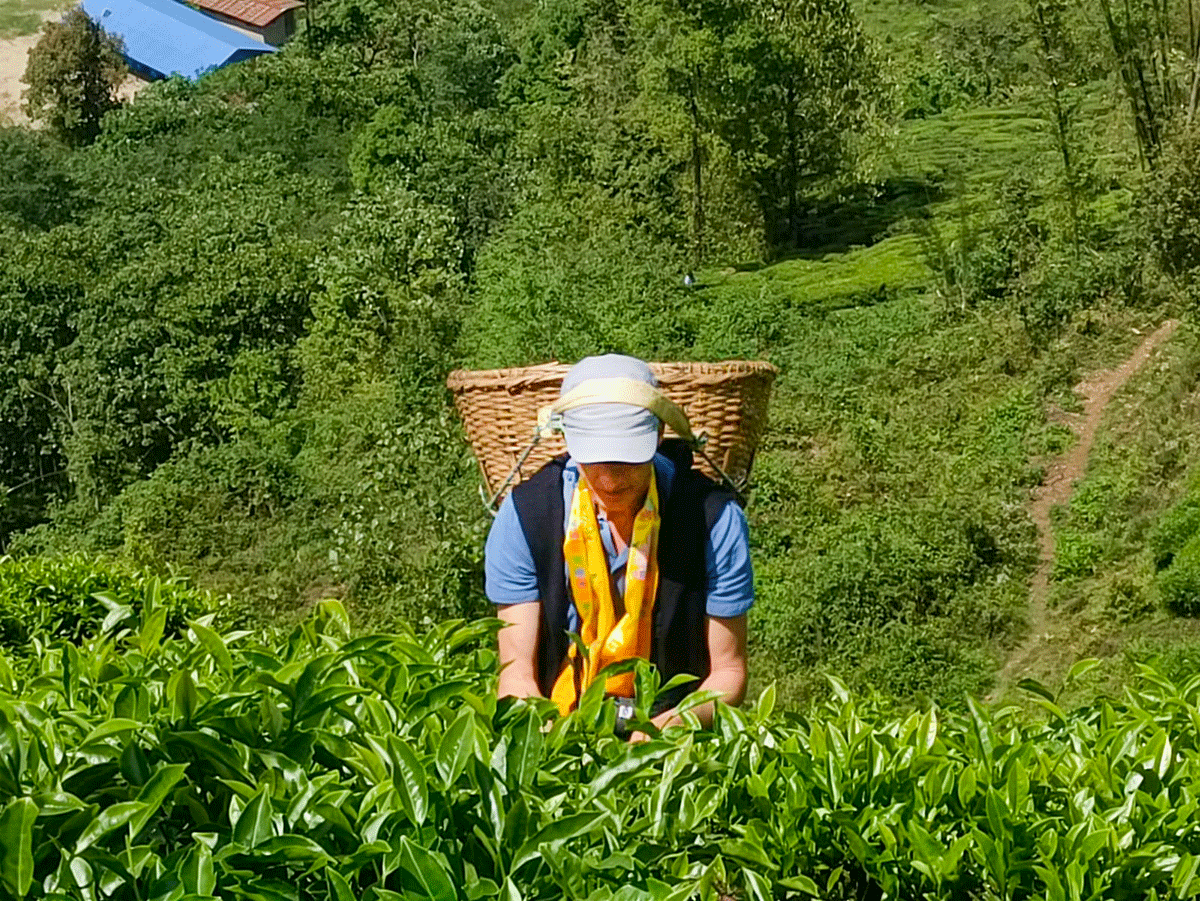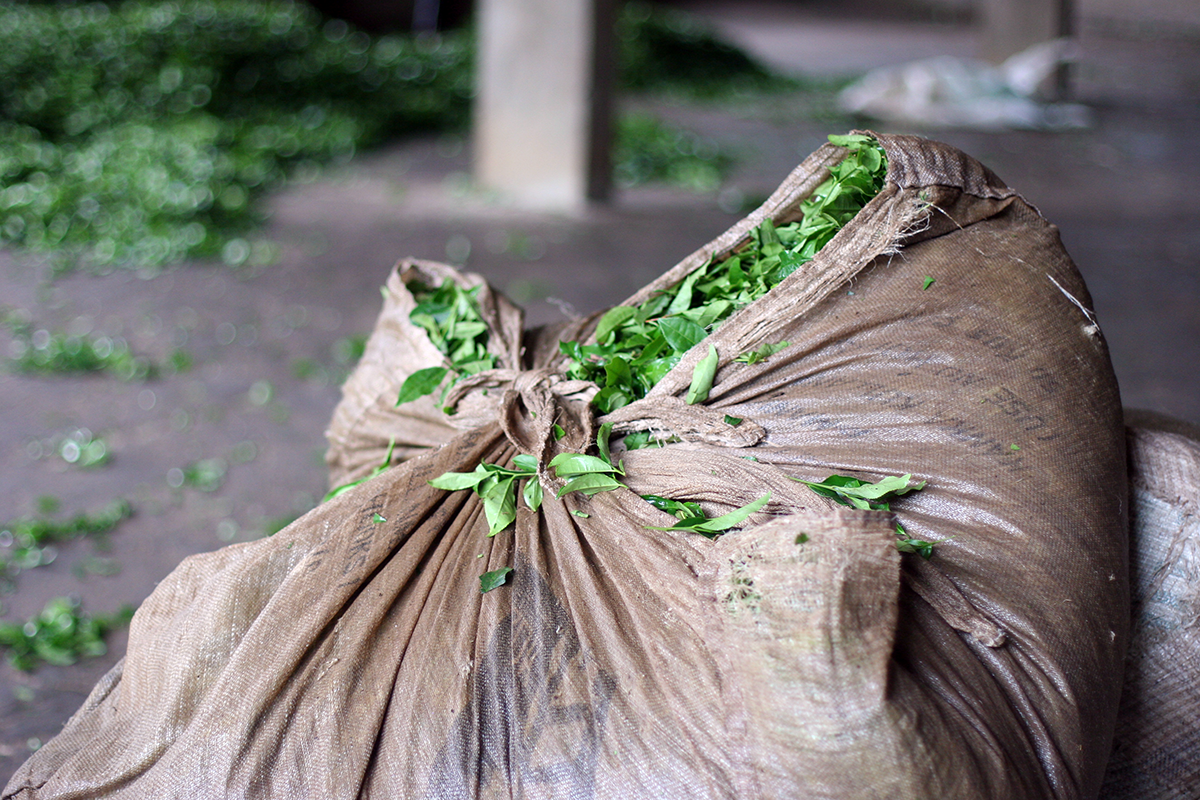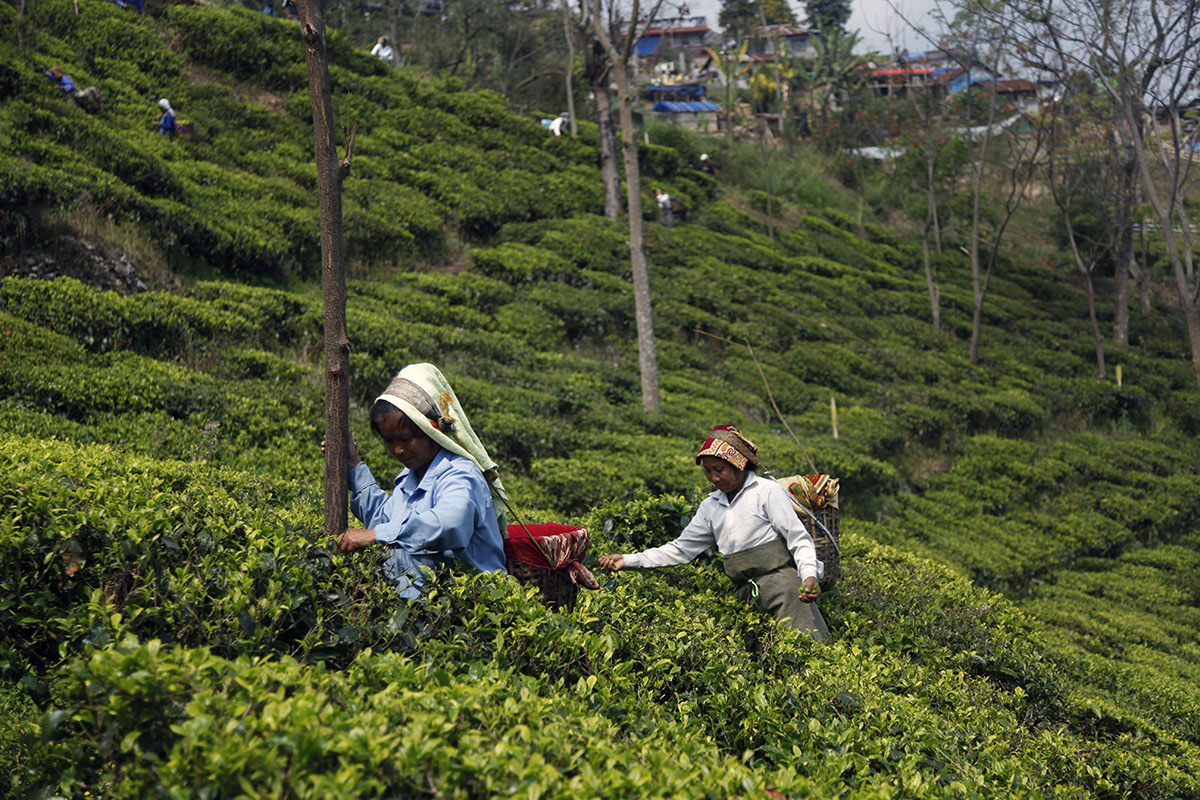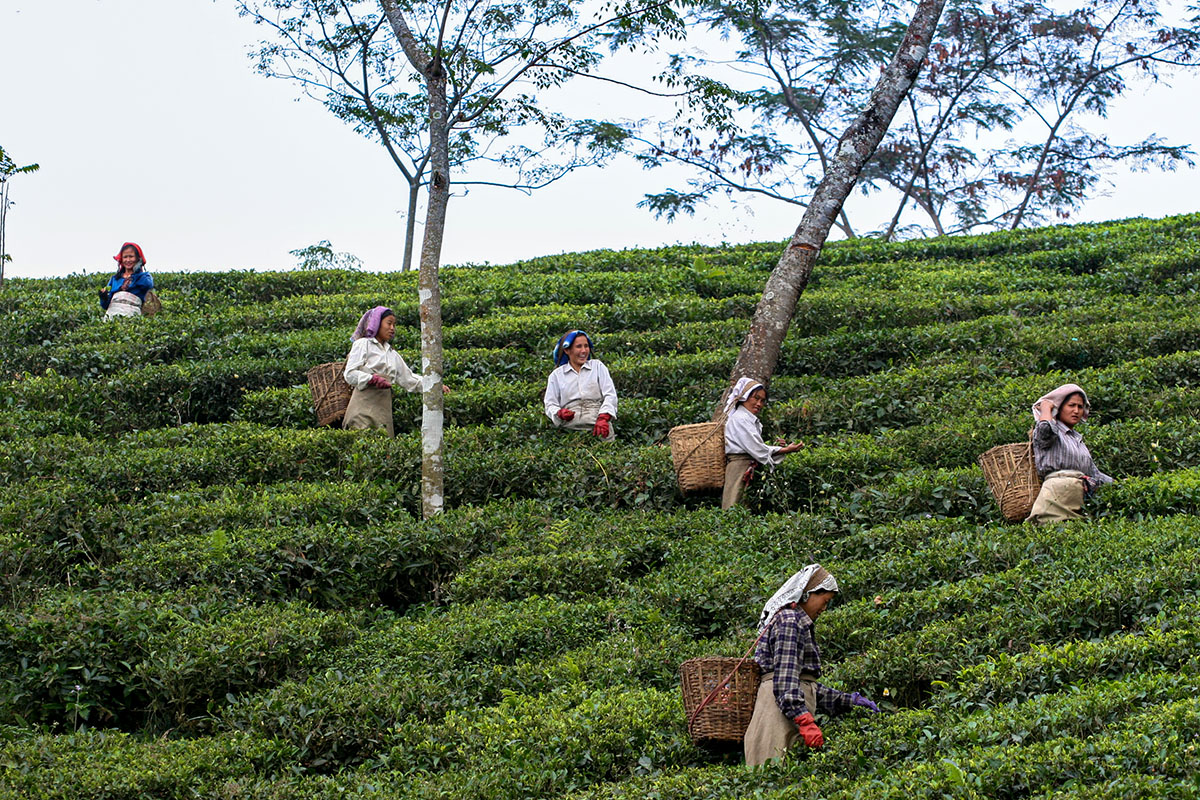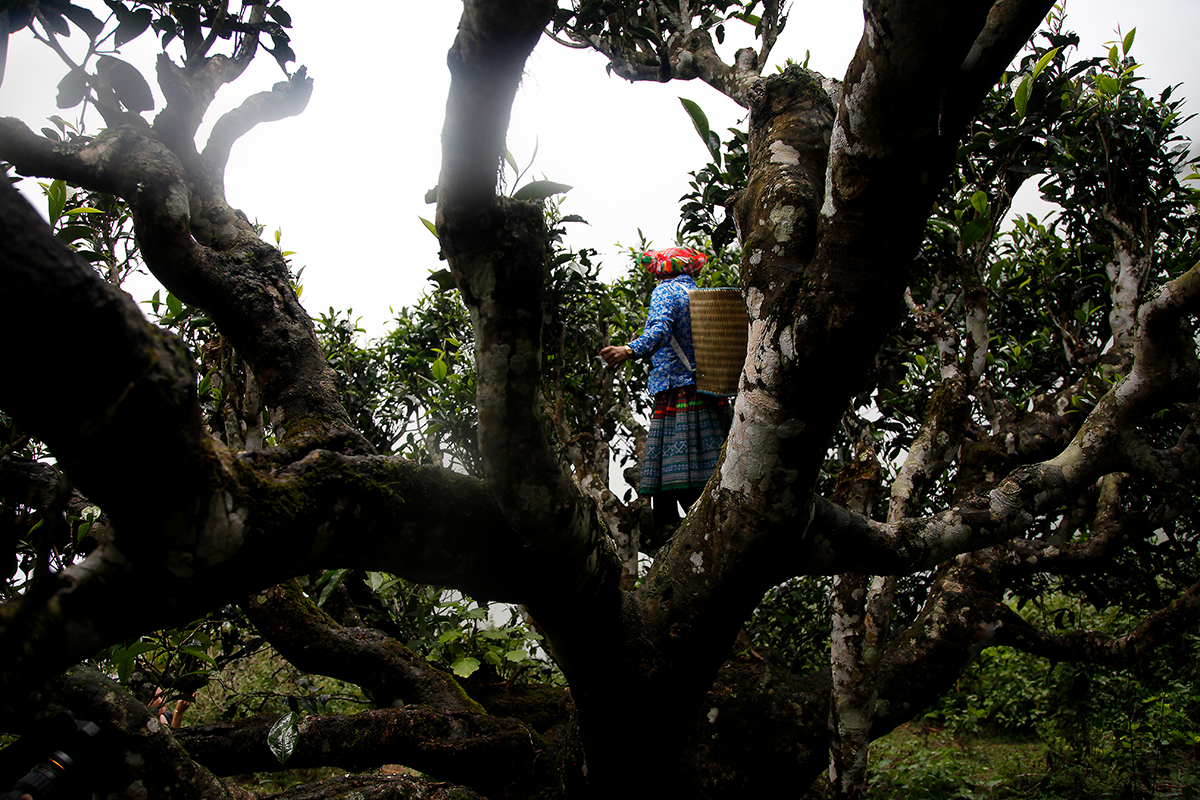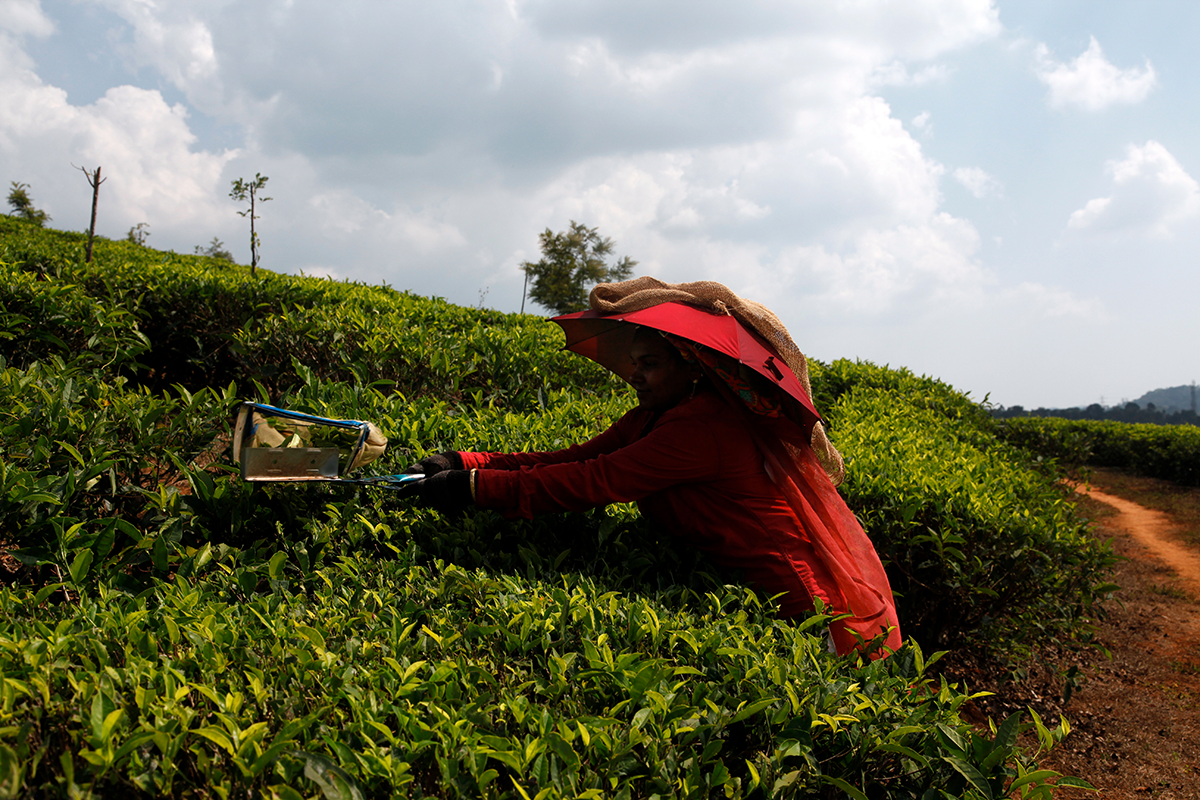Tea has been grown on the island of São Miguel in the Azores for over a hundred years. It has a hot and humid climate, acidic volcanic soil, and a mountainous terrain. That’s all it takes for the tea plant to feel at home here.
Harvest
Different practices
You might think that the rules that define the colour of a tea are strict, but this isn’t always the case. Here in the Golden Triangle, the fashion is for Mao Cha, the tea that serves as a base for the various fermented teas known in this part of the world as Pu Erh. Some people let the Mao Cha wither overnight before fixing it with heat, rolling it, then leaving it in the sun for a day. Others, as soon as the leaves are picked, fire them in a wok for about ten minutes before rolling them by hand and leaving them to dry for five to six hours in the sun.
Among the Karen people
It is not only in China and northern Vietnam that tea leaves are harvested from camellias that have grown tall. In the north of Thailand, a few kilometres from Myanmar, this woman, who belongs to the Karen ethnic group, picks young shoots from old tea bushes that are flourishing in the jungle. These will be used to make maocha, which is then turned into dark tea.
The art of picking tea
When it comes to picking tea, you have to do it to understand it. It’s difficult to imagine what it feels like to stand for a whole day, sometimes on a steep slope, with a ten- or twenty-kilogram basket on your back. This basket is held in place by a strap across the forehead while the picker quickly plucks the bud and the two young leaves from every stem on the bush with their nimble fingers. The gesture has to be repeated thousands of times and the young shoots must be thrown over the shoulder with a certain dexterity to make sure they land in the basket. Here, yours truly is concentrating on the task. (Photo: Uday Yangya)
Different pruning methods
No two tea fields are the same, and growing practices vary from one planter to another. As far as pruning is concerned, some thin the tea bushes once a year and level out the branches to form what is known as the plucking table. Others, like our friend Bente in Tanzania, pictured here, use a different pruning method to allow more light to reach the bushes, even the lower branches.
Isolation and fermentation
Freshly plucked tea leaves shouldn’t be kept in isolation, or they might start to ferment. As soon as they are harvested they are transported to the factory in bags made from a light, loosely woven material that allows air to circulate. The journey must be as short as possible to prevent the risk of the young shoots undergoing an undesirable change.
Hooray!
Today, I’m only going to focus on the good news! I bought three very rare batches of Darjeeling produced this spring. Nepal has continued to produce tea during lockdown, and as soon as the French postal system is functioning again I will receive some delicious samples. In China, a pre-Qing Ming Huang Shan Mao Feng, a Lu Shan Yun Wu, a Yue Xi Cui Lan and a rare Huo Shan Huang Ya are already on their way. In Japan, after a winter that was long but relatively mild, the harvests are a little late. By mid-May I will have received all the samples and will be able to make a good selection. And to top it all, each of the teas I buy will be sent to the lab before we sell it, to ensure it complies with European standards – unless it already has French “AB” organic certification. This means we can enjoy them with peace of mind, and appreciate all their benefits.
Working outside
These tea pickers have less to fear from Coronavirus than others. They walk to work, they move about in single file, they keep a good distance between themselves, and what’s more, they work outside. Sadly, this isn’t enough in a country of more than a billion inhabitants, and now the entire Indian population must stay at home. Let’s hope that we can banish this virus quickly, and get back to savouring their country’s delicious teas.
Harvesting in the treetops in the Golden Triangle!
In the region known as the Golden Triangle, you can find tea plants that are not quite like the others. Instead of being pruned at a low level to make it easier to pick the leaves, they are left to grow like trees. When harvest time comes, the pickers must climb up into the camellias, some of which are several hundred years old. The leaves from these trees are particularly sought-after to make Pu Erhs and dark teas.
Tea is not always harvested by hand
Harvesting tea using shears poses a problem in terms of quality, as the stems get cut too, instead of just the shoot and the two next leaves. For a high-quality tea, nothing surpasses picking by hand. When, during my travels, I see someone using shears, I talk to the planter to find out why this is. Often, it’s due to a lack of workers. Another common situation is that the tea is picked by hand in the best season, and then shears are used for the lesser-quality harvests, and these leaves will be used for tea bags.

